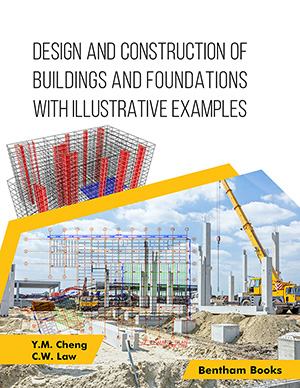About Book
Introduction
This book is an essential guide to analysis and design of tall buildings and foundations. The book covers the basic consideration of tall buildings, selection of a suitable structural form, structural materials, and analytical methods for several types of construction loadings. The last chapter of this book presents an illustrated case study for learners. An appendix of different structural analysis calculations rounds up the book. The detailed analysis and learning material presented in the book is intended to enable readers to master the basics and understand how to execute practical civil engineering projects. Key features: - Covers the essentials of skyscraper design and construction in detail with a focus on learning. - Covers building modelling parameters and criteria with design reports and computer inputs. - Includes analysis and notes for foundation layout, loadings and the excavation and lateral support system (ELS). - Includes more than 250 detailed illustrations of concepts, construction plans and photos from real projects. - Includes references and appendices for advanced readers. - Includes more details than most of the similar texts, with practical guidelines based on references from many buildings and foundation projects. The authors have extensive research and practical experience of buildings and foundation analysis and design in Hong Kong, and have actively served as regional engineering committee members overseeing structural and foundation disciplines.
Indexed In
Table of Contents
Introduction
Page: 1-11 (11)
Author: Y.M. Cheng* and C.W. Law*
DOI: 10.2174/9789815238006124010002
PDF Price: $30
Structural Design of Building’s Superstructure
Page: 12-42 (31)
Author: Y.M. Cheng* and C.W. Law*
DOI: 10.2174/9789815238006124010003
PDF Price: $30
Loads on Superstructure and their Statistical Nature
Page: 43-103 (61)
Author: Y.M. Cheng* and C.W. Law*
DOI: 10.2174/9789815238006124010004
PDF Price: $30
Approaches and Methods for Analysis of Building Structure
Page: 104-147 (44)
Author: Y.M. Cheng* and C.W. Law*
DOI: 10.2174/9789815238006124010005
PDF Price: $30
Ductility, Robustness, Durability and Fire Resistance Design Considerations in Buildings
Page: 148-186 (39)
Author: Y.M. Cheng* and C.W. Law*
DOI: 10.2174/9789815238006124010006
PDF Price: $30
Criteria for Foundation Options Selection
Page: 187-192 (6)
Author: Y.M. Cheng* and C.W. Law*
DOI: 10.2174/9789815238006124010007
PDF Price: $30
Shallow Foundation Analysis and Design
Page: 193-289 (97)
Author: Y.M. Cheng* and C.W. Law*
DOI: 10.2174/9789815238006124010008
PDF Price: $30
Pile Foundation Analysis, Design and Construction
Page: 290-412 (123)
Author: Y.M. Cheng* and C.W. Law*
DOI: 10.2174/9789815238006124010009
PDF Price: $30
Excavation and Lateral Support System (ELS)
Page: 413-505 (93)
Author: Y.M. Cheng* and C.W. Law*
DOI: 10.2174/9789815238006124010010
PDF Price: $30
Illustrations of a Building Design, Foundation System, and Link Bridge
Page: 506-533 (28)
Author: Y.M. Cheng* and C.W. Law*
DOI: 10.2174/9789815238006124010011
PDF Price: $30
Subject Index
Page: 579-584 (6)
Author: Y.M. Cheng* and C.W. Law*
DOI: 10.2174/9789815238006124010017


